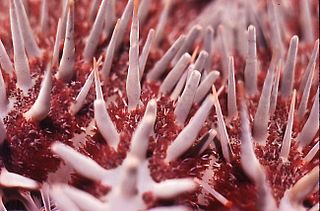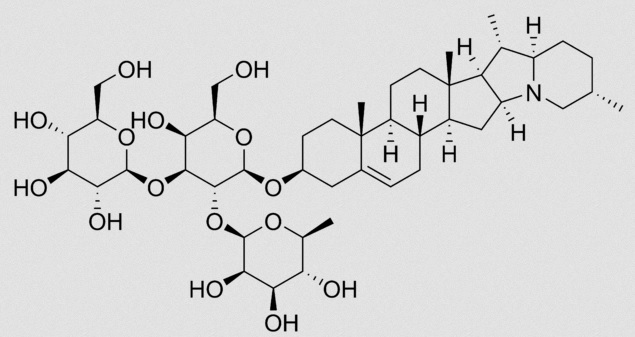Venom
Acanthaster planci utilizes two toxin compositions to fend off predators. These two compositions consist of the irritant saponins (found in the tissues of its body) and the potentially lethal plancitoxin I, found in the spines.
Saponins: Saponins can be found in many sea cucumbers, starfish, and even plant species such as the Horse chestnut. Acanthaster planci is known to possess the venom as early as the larvae stage of its life-cycle. This venom causes inflammation of tissues and persistent bleeding which can last up to a week; furthermore, once the venom enters the body of an organism it can cause vomiting and nausea. Saponins also possess detergent-like properties which causes foaming when released into water and has an unpleasant taste for predators. Saponins may enter the body of organisms if the organisms ingest Acanthaster planci tissues, or if they are punctured by the spines.
A swollen arm after being exposed to saponins (left).
Acanthaster planci inside of a bucket of foaming water from
saponin exposure (right).
Plancitoxin I: Plancitoxin I is a potentially lethal toxin which
can cause liver cells to undergo apoptosis (cellular death) by
entering the nucleus of the cell and then degrading the DNA. In
a study, rats were injected with this venom from Acanthaster
planci. Researchers found that the plancitoxin I would travel to
the liver and target specific rat TRL 1215 liver cells, which
then binds to the receptors in the cytoplasmic membrane. The
toxin then enters the cell and finds the nucleus to begin
degrading the DNA. This procedure of liver cell damage is called
hepatotoxicity (Toxicon
1002-1010) This venom is injected into organisms when they
are punctured by the spines.
Complications: Some of the most common puncture sites in humans can be the appendages. The Crown-of-Thorns starfish has sharp spines which can pierce through gloves, clothing, and even footwear such as boots. Penetration by these spines can cause severe inflammation, hemorrhage, damage to joints, and possible liver damage.
Next, check out Nutrition!
.jpg)
